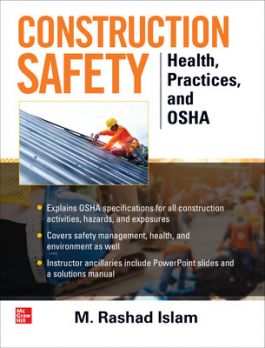
Children’s environmental health will be a priority in the Obama administration. For us EHS pros this means we should prepare for a renewed emphasis on reproductive health hazards.
Under the Clinton Administration, EPA considered children’s environmental health to include risks such as parental occupational exposures to toxicants before conceiving a child and maternal exposures during gestation. Going forward, whenever you hear or read the term “pregnant” insert the term “child” and whenever the term “environment” comes up be aware that it may include the workplace.
Trendlines
In January 2008, EPA announced the agency awarded more than $500,000 in grants to state health agencies to help reduce environmental risks to pregnant women. EPA’s news release said that pregnancy is a time for joy and celebration, “but it is also a time to be especially careful about the environment in which one works and lives.” The emphasis on work is mine, but it draws a focus on this growing issue.EPA issued new rules to protect children against lead-based paint hazards in March 2008. The rules specifically address pregnant women, too. Barack Obama felt that the EPA rules left too many pregnant women and children unprotected and he promised more stringent legislation.
In September 2008, Obama joined Sen. Clinton to cosponsor S. 3495: Protect Pregnant Women and Children from Dangerous Lead Exposures Act of 2008.
Research dollars
In October 2008, Michigan’s ailing economy received good news when the National Institute of Health doled out $57 million in funding to the state’s top research universities to carry out their role in the National Children’s Study.Likewise, Florida, through the University of Miami Medical School, is smiling about their October 2008 receipt of $54.6 million dollars for their part in the NCS.

Subtle point, huge issue
The study on children’s health begins before birth; which means the study will include information on parental exposures before conceiving a child and maternal exposures during pregnancy.Occupational exposures are included in the study. Workplace information will be acquired through interviews, completed questionnaires, and from tissue (e.g. blood, urine, sperm and hair and biological and chemical samples). Although most samples will be collected from the home environment, researchers will not be precluded from determining if the exposures have a workplace origin. For example, if researchers find lead in tissue samples or lead contamination in the home they may track its source back to the workplace.
Politics
The NCS was a concept that originated with President Clinton’s May 1997 Executive Order 13045 on the Protection of Children from Environmental Risks and Safety Risks. Congress authorized the NCS under the Children’s Health Act of 2000.President Bush did not favor Clinton’s executive order on children’s environmental health, and by 2005 the Bush administration effectively shut the order down.
The Bush administration’s “neglect” is now being investigated by the Government Accountability Office (GAO). Its first report was released on September 16, 2008. Sen. Clinton’s response to the GAO report: “Ten years after the landmark work of the Clinton Administration, this is the state of children’s health protection at the EPA: no leadership, no resources, no initiative, and no real mission. It’s a disaster and it’s a disgrace, and we have to fix it.”
Global leadership
President Clinton’s order paved the way for the U.S. to lead the world in children’s environmental health. Bush’s actions slowed the country down and by 2004 Europe leapfrogged past America when it established and began carrying out the Children’s Environment and Action Plan for Europe (CEHAPE).One thing is certain: change is coming and you need to be prepared. For example, if your workplace is located in one of the NCS locations (counties) your facility’s OSHA and EPA hazard and risk communication programs should be complementary and kept up-to-date.


